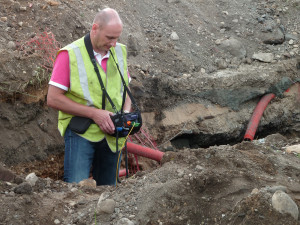OTDR refers to Optical Time-Domain Reflectometer, a test instrument that analyzes the light loss in an optical fiber and verify inline splices on concatenated fiber optic cables and locate faults. If you use fiber optic cables for network connectivity, you ought to know about the applications and basic setting of OTDR.
Applications:

- OTDR can be used for return loss measurements, although quoted accuracy is not particularly high. It is very useful for measuring points loss on installed systems where it is used to find faults and measure point losses such as caused by splicing. However, to do this accurately is more complicated and time consuming than is commonly supposed. Since a measurement should be taken from both ends of the system and then averaged.
- OTDR is useful for testing fiber optic cables. It can verify splice loss, measure length and find faults. It simply shows you where the cables are terminated and confirm the quality of the fibers, connections and splices. What’s more, OTDR trace could be also used for troubleshooting, since it can show where breaks are in fiber when trace is compared to installation documentation.
- OTDR is also widely used for optical cable maintenance and construction. Because it can evaluate the fiber cable length, measure optical transmission and connection attenuation, as well as detect the faulty location of the fiber links.
- In addition to fiber characterization, OTDR can also be used for sensing chemicals and gases. Because certain substances cause changes to the light guiding properties of the fiber and those can be observed as changes in the measurement curve.
According to the contents above, we could learn that OTDR is a valuable fiber optic tester in many applications. However, if you use it in an improper way, it can be misleading and can lead to some unnecessary mistakes. So it is necessary to understand some basic settings when using OTDR. Using an OTDR is not very difficult, but it does require familiarity. Here are some tips on how to minimize the chance of making a costly mistake.
Basic Settings:
- Fiber Type – first you should choose singlemode or multimode.
- Wavelength – you usually start with 850 nm on multimode fiber and 1310 nm on singlemode, since the shorter wavelength has more backscatter so the trace will be less noisy.
- Measurement Parameters – the typical parameters to be set are distance range, resolution, and pulse width.
- Event Threshold – it determines how much loss or change will be tagged as an event.
- Index of Refraction – it is the speed of light in the fiber. You can obtain this figure from the fiber manufacturer. In most cases, you can take it directly from a standard specific sheet.
- Display Units – they are usually labeled in feet or meters.
- Storage Memory – this should be cleared so a new figure can be saved or stored.
- Dead Zone Jumper – you must connect this fiber which should be sufficiently long between the OTDR and the fiber under test. Sometimes you may also have to connect it at the far end of the cable.
OTDR is valuable test instruments that can illuminate problems in your optical fiber. Once you’re acquainted with what it is used for and learn some basic settings about it, you’ll be prepared to detect and eliminate your optical fiber events. It is an ideal test instrument applied to return loss measurement, fiber optic cables testing, optical cable maintenance and construction, as well as sensing chemicals and gases etc.
